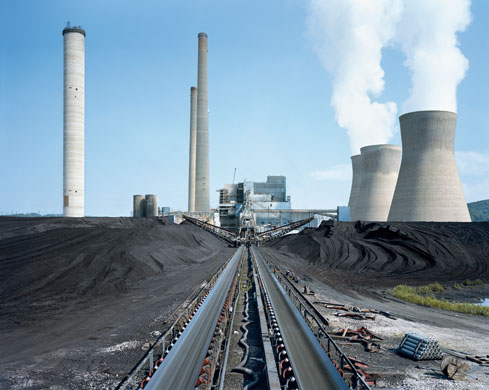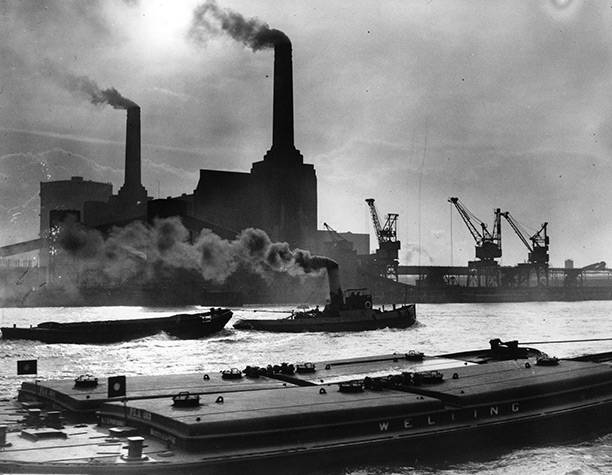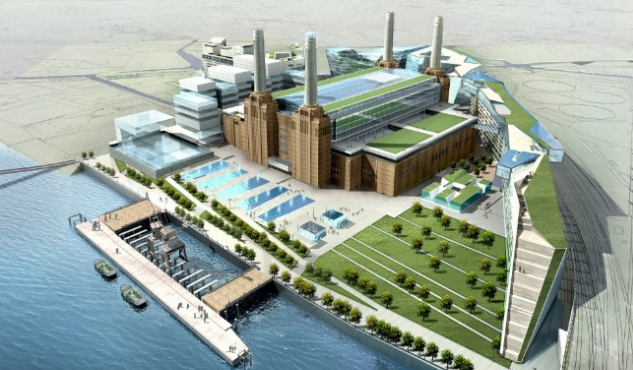As my project focuses heavily on the observation of the energy industry but with a critical eye, it makes complete sense to look at somebody who has done it all already; Mitch Epstein. In his project aptly named American Power, he has essentially gone around as some sort of energy sightseer, touring America to find each power station facility far and wide in all their glory nakedness. He spent 5 years conducting his exposition of these places to help give clarity to their connected purposes, be it strengths, weaknesses or in some cases abandonment. It's worth bearing in mind, this project took place in the post-9/11 Bush era where everybody was on their toes about security and any endangering activity. According to The Guardian, he was regularly stopped, searched, followed, and even run out of town. (http://www.theguardian.com/environment/2009/oct/03/mitch-epstein-power-plants-photographs)
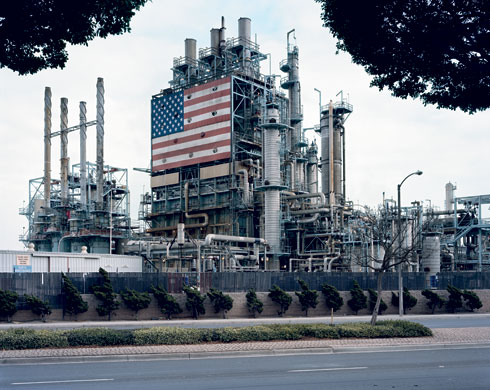
In the above image, you can see BP Carson Refinery in California. He took this in 2007, and published it in 2009 with Black River Productions. The aesthetic complexity of the facility provides a somewhat pleasing experience for onlookers, and the exposure Epstein has captured provides a warm yet somewhat overcast image of the place. In the image, the mechanical architecture is visually boxed in by the nature that surrounds it, almost a metaphor for the threatening ability that comes as an implication towards what these facilities are capable of doing to nature as a whole. These simple landscapes combine as something more, they have a certain silent comment attached about political and corporate power, which provides Epstein with freedom and ability to show the world what these places truly behold when they are seen bare from the public view. John Vidal says in a separate Guardian article "Epstein photographed coal mines, solar arrays, oilfields, half-empty dams, smokestacks, fuel cells, nuclear plants and pipelines, but also many of the things the most energy-profligate nation on earth does with all that power – such as build Las Vegas and golf courses in the desert, send tanks to Iraq, blow the tops off mountains to find coal, make nuclear bombs and electric chairs." All these photographs can be caption-free and still make a difference to viewers when the images are presented as one.
(http://www.theguardian.com/environment/2009/oct/03/mitch-epstein-power-plants-photographs)
This image is taken of Amos coal power plant, in Winfield, West Virginia, 2007. The Guardian claims that his pictures, he says, show the 'beauty and terror of early 21st-century America as it clings to past comforts and gropes for a more sensible future', a future with no current direction. This very tedious and exasperated method of energy creation has served its time for many decades, but the method has had little implication of bettering the world long-term whilst it does its job.
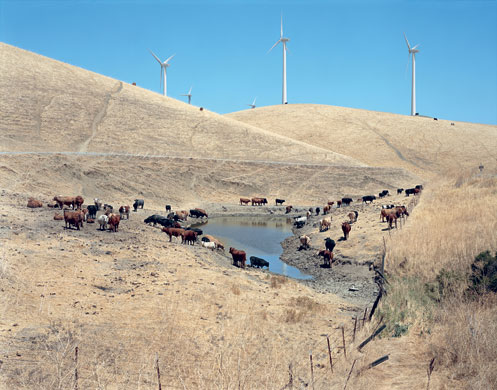
This image particular sticks out as a subtle way of showing where technology and nature blend in together fairly seamlessly. There is an argument to be had here as to whether this successfully merges the two or creates an imbalance of binary opposites. Taken in Altamont Pass wind farm, California, we can see the Wind Farm sits among nature with little more than a wave of some kind of blade placed out of harms way. With an exception to birds, this method does nothing to interrupt the nature surrounding it, aside from a visual disturbance for humans. Those who choose to complain about such facilities should reflect on the fact that there are truly worse things that could be seen, such as a very large chimney outputting harmful gas.

In this instance, my point is a little more obvious - this truly separates the foreground from the background. This image also shows Amos coal power plant, Raymond City, West Virginia, taken in 2004. The presence of greenery; trees and grass amongst the quaint little houses, all of it is interrupt by the gargantuan chimneys cascading in the background as towers. Aside from those who appreciate architecture, most people would believe this to be the true distraction, visually. Epstein has created a whole set of brilliantly captured photographs, with great composition, binary opposition, and comment. He will greatly influence my photography for this project.













